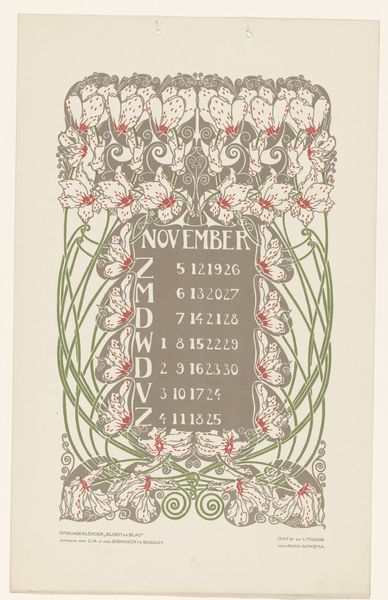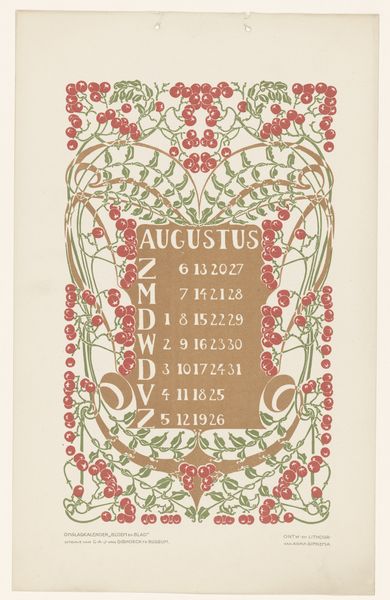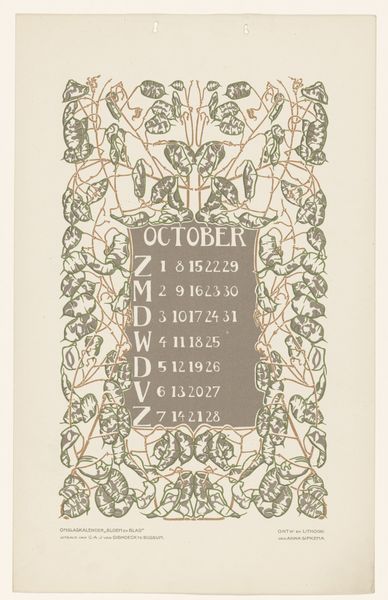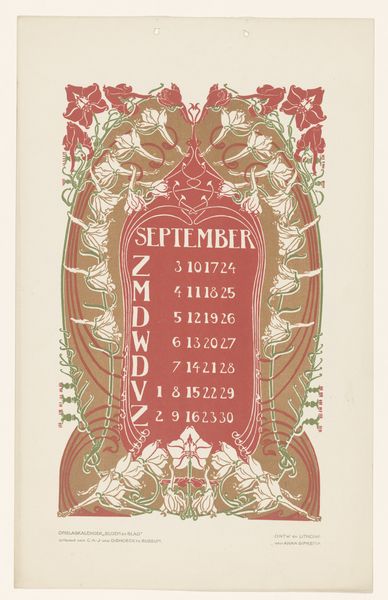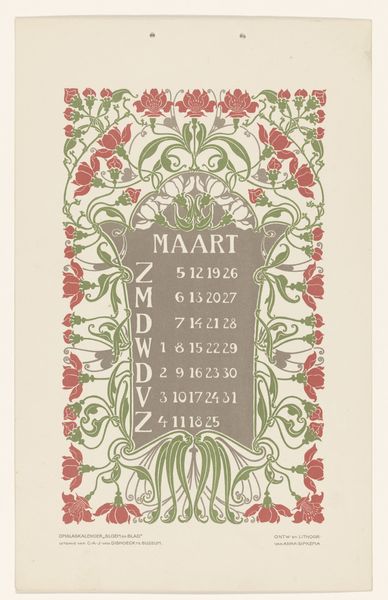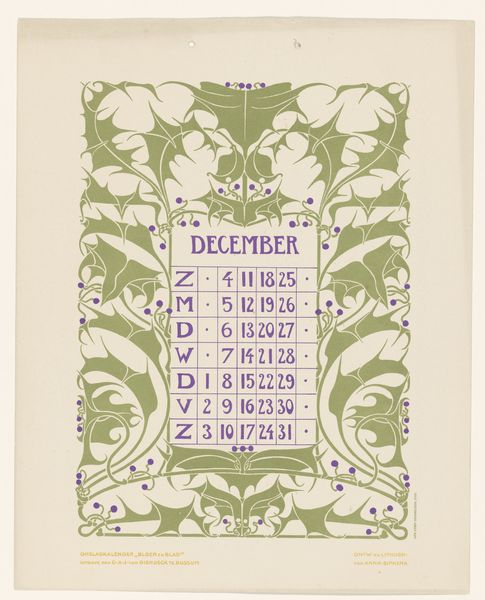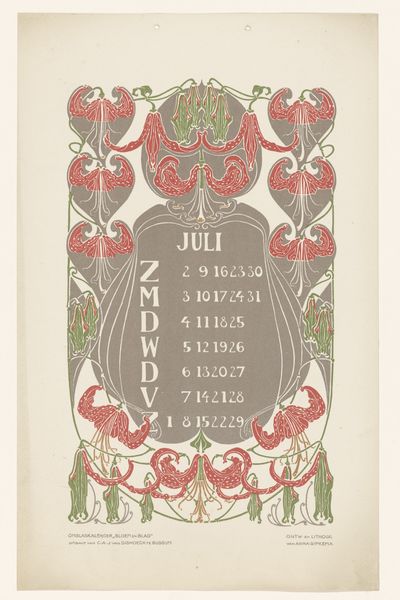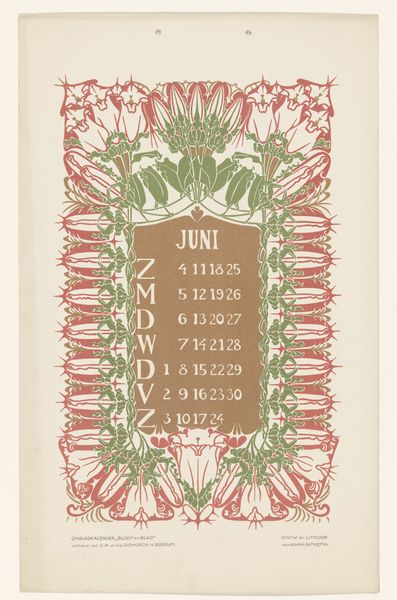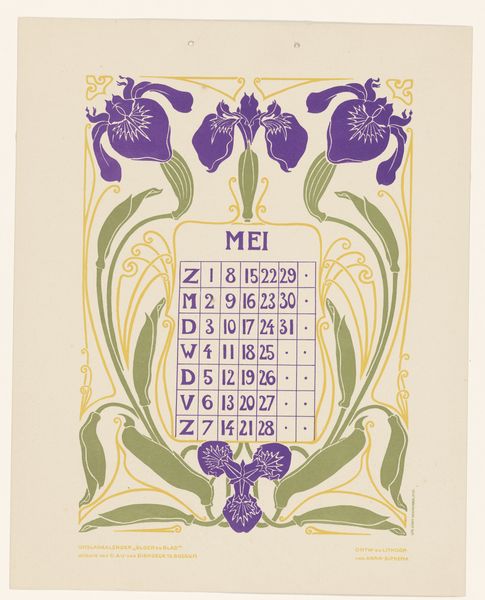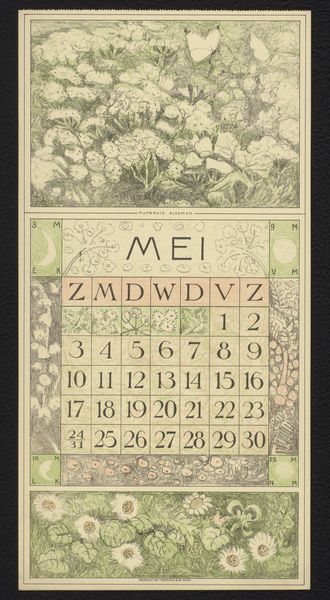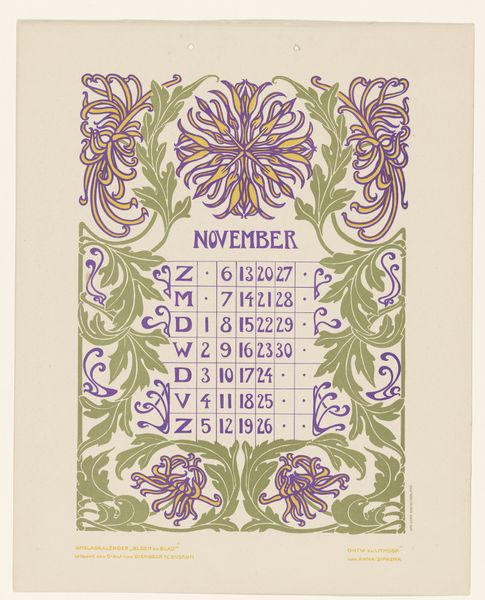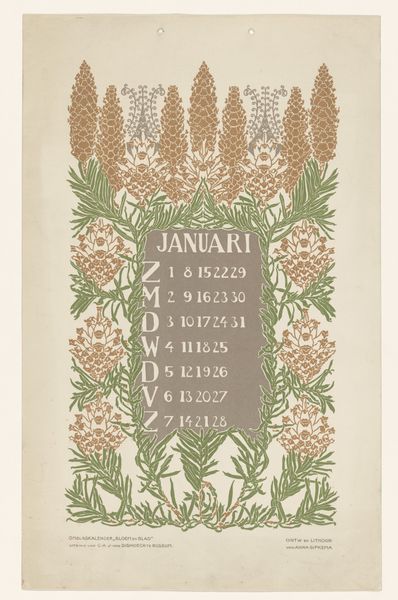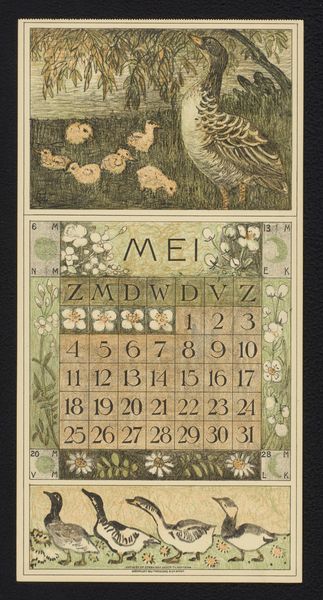
print, typography, poster
#
art-nouveau
# print
#
typography
#
geometric
#
line
#
decorative-art
#
poster
Dimensions: height 370 mm, width 230 mm
Copyright: Rijks Museum: Open Domain
Editor: So, this is “Kalenderblad mei met bloemen,” or "Calendar Page May with Flowers", believed to be from before 1905, created by Anna Sipkema. It’s a poster and a print, incorporating typography, so almost like decorative art. I love the geometric lines entwined with the leaves, so very Art Nouveau, right? It makes me wonder, what was the role of such decorative arts and printed calendars within Dutch society at the turn of the century? Curator: That's a fantastic question. These types of decorative calendars were part of a larger movement aimed at integrating art into everyday life. Mass production was booming, but this was trying to counter the dehumanizing effect through artistic expression. This poster offered a visual escape, presenting an idealized nature, didn’t it? It also served the practical purpose of organization – bridging art and functionality. Considering that, who was it really for? Editor: I see your point. While aesthetically pleasing, a printed calendar seems inherently linked to commerce or public information. Maybe businesses used them to advertise, or maybe even schools and government organizations. The accessibility of mass print made disseminating information far easier than by paintings displayed in galleries. Curator: Precisely. Art Nouveau, even in this form, aimed at democratizing art. Rather than existing in rarefied spaces, art was now intended for a wider audience, blurring the boundaries between commercial and artistic pursuits. Do you think it challenged the establishment view of what "art" should be? Editor: Absolutely! I'd argue things like posters began paving the way for popular art, especially with wider distribution. It raises a key question: where do you draw the line between craft, design, and high art? Thank you; I’ll be chewing on that concept all day. Curator: And the very act of displaying a calendar in one’s home can be seen as a quiet act of participation in contemporary visual culture. We are all participants to the system, and its influences can appear in unexpected forms, like calendars!
Comments
No comments
Be the first to comment and join the conversation on the ultimate creative platform.
